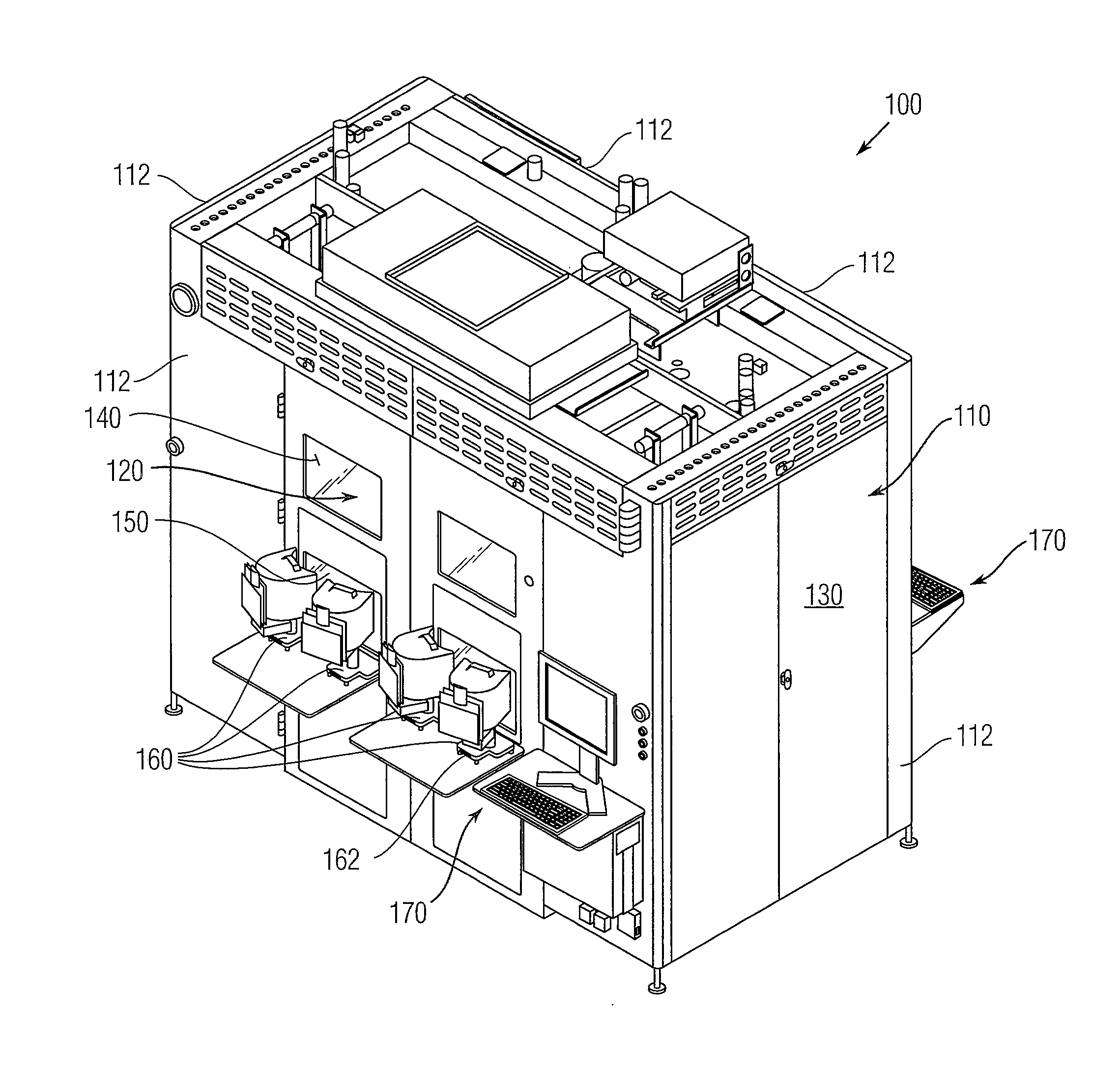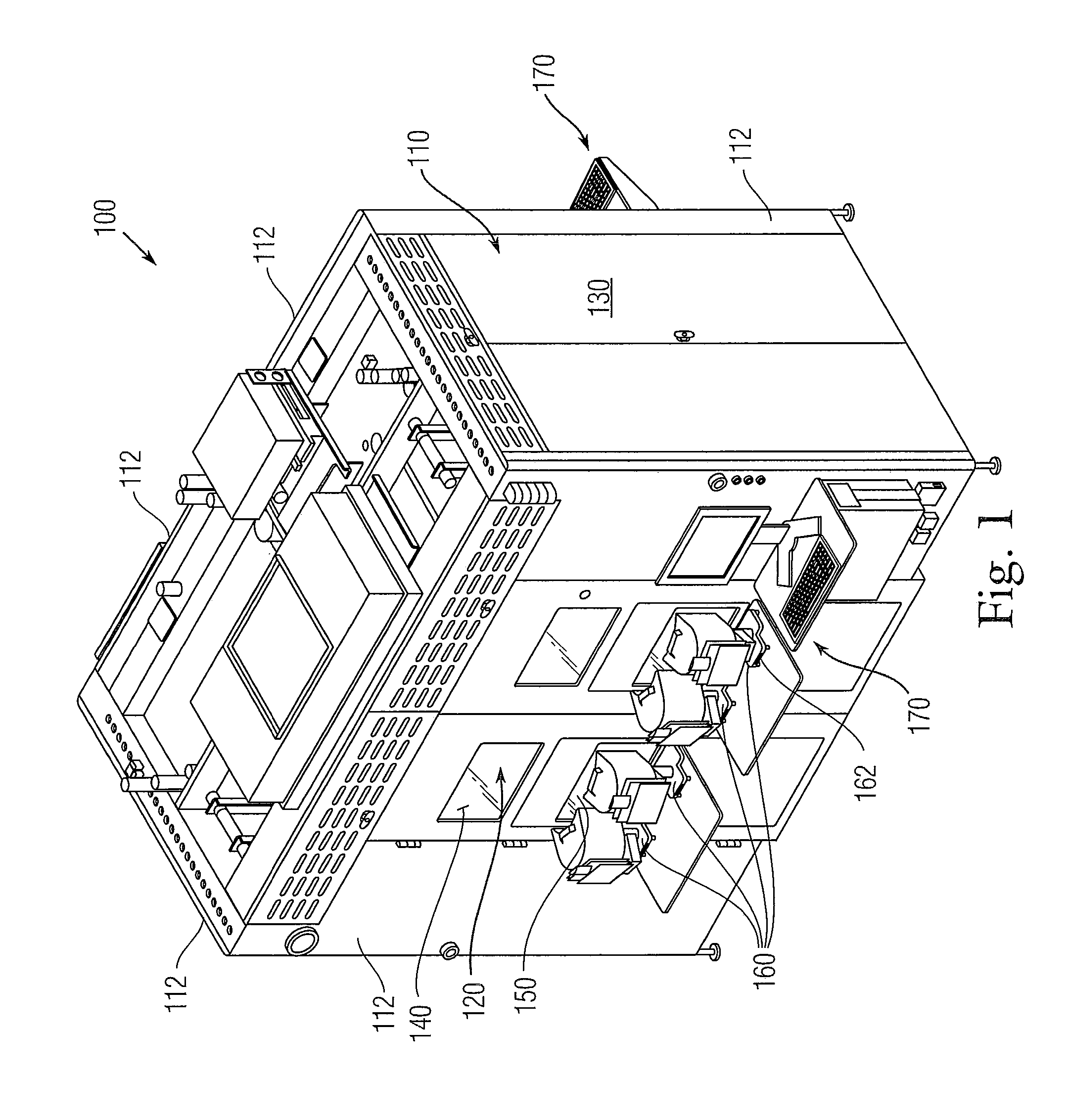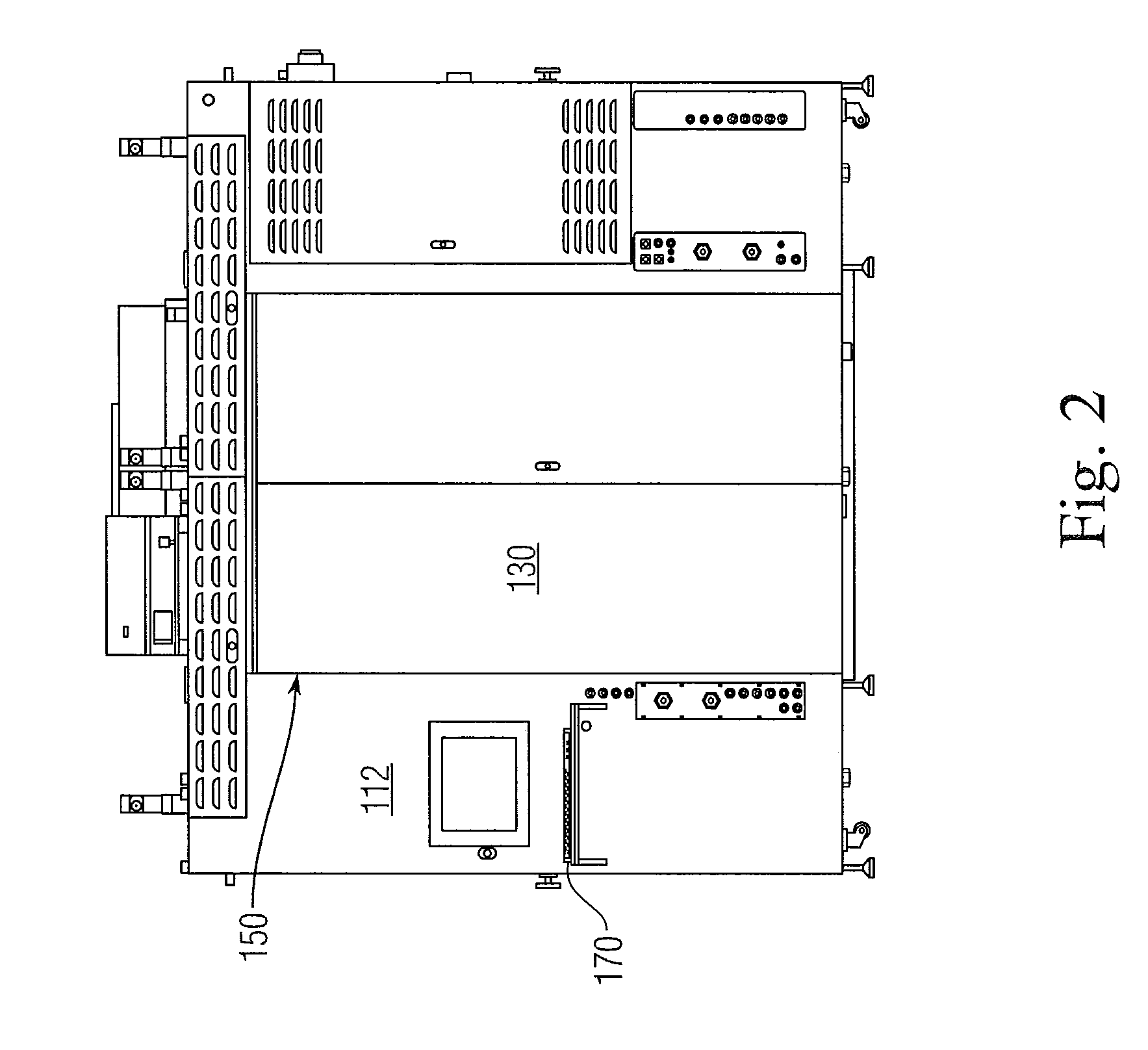System and method for performing a wet etching process
a technology of wet etching and wet etching, which is applied in the direction of computer aided design, semiconductor/solid-state device testing/measurement, instruments, etc., can solve the problems of reducing yield, complex process and associated costs, and altering electrical properties at contaminated sites
- Summary
- Abstract
- Description
- Claims
- Application Information
AI Technical Summary
Benefits of technology
Problems solved by technology
Method used
Image
Examples
Embodiment Construction
[0040]FIGS. 1-5 illustrate a system 100 for performing a wet etching process in accordance with one embodiment of the present invention. The system 100 can thus be thought of as being a wet-etching facility for manufacturing semiconductor devices.
[0041]In a wafer wet treatment process of a semiconductor device manufacturing process, there are generally an etching process and a cleaning process as mentioned hereinbefore. A single wafer wet treatment apparatus used in an etching process dispenses chemical etchant in a controlled manner on a substrate for inducing a chemical reaction during a fixed time. It will be understood that the terms “wafer” and “substrate” are used interchangeably herein. A single wafer wet treatment apparatus used in a cleaning process causes a chemical solution to be dispensed onto a substrate and can also include a scrubbing device to mechanically scrub the substrate. Each of the wet treatment apparatuses can include a bath that collects fluids that overflow...
PUM
| Property | Measurement | Unit |
|---|---|---|
| Thickness | aaaaa | aaaaa |
| Depth | aaaaa | aaaaa |
| Height | aaaaa | aaaaa |
Abstract
Description
Claims
Application Information
 Login to View More
Login to View More - R&D
- Intellectual Property
- Life Sciences
- Materials
- Tech Scout
- Unparalleled Data Quality
- Higher Quality Content
- 60% Fewer Hallucinations
Browse by: Latest US Patents, China's latest patents, Technical Efficacy Thesaurus, Application Domain, Technology Topic, Popular Technical Reports.
© 2025 PatSnap. All rights reserved.Legal|Privacy policy|Modern Slavery Act Transparency Statement|Sitemap|About US| Contact US: help@patsnap.com



